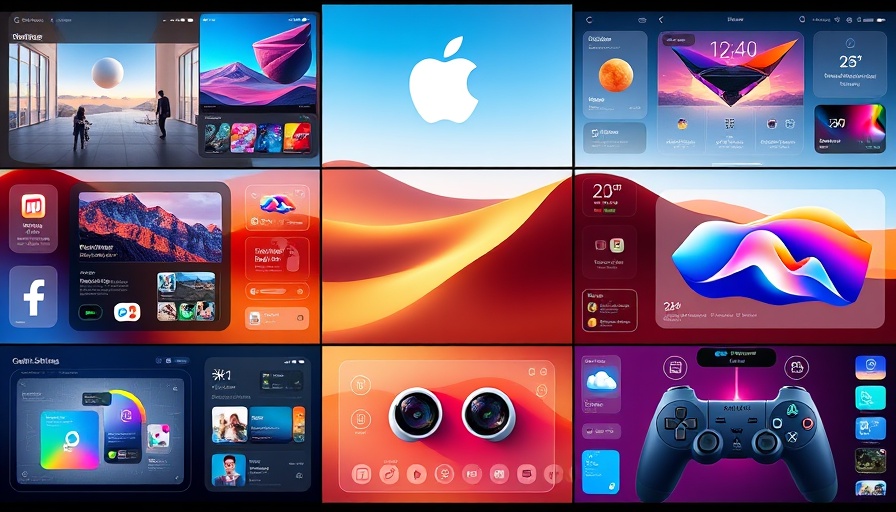
Apple's visionOS 26: The Future of Mixed Reality
Apple has been taking massive strides in the realm of mixed reality with its latest updates to visionOS 26, unveiled at this year’s WWDC. This operating system is at the heart of the company's Vision Pro headset, which merges digital content with the physical world in a transformative way. Following the foundational work laid by last year’s version, visionOS 26 enhances user experience with new features that promise innovative functionalities for both consumers and businesses.
Personalized Spatial Widgets: A New Era of Customization
One of the standout features in visionOS 26 is the introduction of personalized spatial widgets. These widgets provide dynamic, useful information that integrates seamlessly into your unique surroundings. Users can now customize widget size, color, and display depth to match their preferences. Features like an interactive clock, adaptive weather information, and a music player that allows quick access to favorite tunes make the experience more engaging than ever. Moreover, the ability to transform photo widgets into immersive panoramas adds an artistic touch to the interface.
Enhancing Photography with Depth: Breathing Life into 2D Images
With visionOS 26, Apple has also improved its Photos app by incorporating an AI algorithm that utilizes computational depth. This enhancement allows users to explore their 2D photos in a three-dimensional space, creating the illusion of depth that invites exploration. Imagine being able to 'lean into' your photos and view them from different perspectives—a technological leap that adds a new dimension to personal memories.
Immersive Browsing with Safari
The latest upgrade to Safari allows for spatial browsing, which transforms how users interact with web content. Certain supported articles will come alive, hiding distractions and emphasizing inline images. This experience isn't confined to new content alone; developers are given the tools to adapt their applications, potentially broadening this immersive style beyond just browsing.
Realistic Personas: Bridging the Virtual Gap
A noteworthy addition is the enhanced realistic Personas. Initially launched as a beta feature, these AI avatars now boast improved volumetric rendering and machine learning capabilities that ensure a more accurate depiction of users during video calls. Apple states that these Personas can now reflect more natural features including hair, eyelashes, and skin tone, all crafted in mere seconds on-device. This advancement allows for more relatable and engaging communication, bridging distances in a virtual environment.
Shared Experiences: A Social Approach to Mixed Reality
In a world that increasingly values social connectivity, visionOS 26 has introduced a feature allowing headset wearers to watch movies or play games alongside friends in shared virtual environments. This capability not only enhances the feeling of connection but also transforms how we experience entertainment in the digital age, paving the way for future interactions in shared spaces.
Conclusion: An Exciting Future Ahead for visionOS
As we look toward the future, the updates made in visionOS 26 symbolically represent Apple’s commitment to redefining our interaction with technology. From more personalized widgets to realistic avatars and social experiences, these innovations highlight the company's strategic vision for mixed reality. With an ecosystem that encourages creativity and dynamic interaction, the possibilities are limitless.
For those intrigued by the latest evolutions in technology, and especially Apple’s fresh offerings, keeping an eye on tech news updates becomes essential. Readers should explore credible tech news websites to stay informed about these groundbreaking changes in the industry. The technology landscape is rapidly evolving, and staying informed will only benefit users eager to embrace the future.
 Add Row
Add Row  Add
Add 



Write A Comment